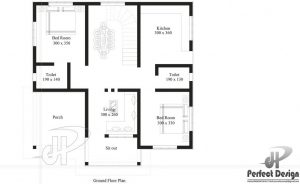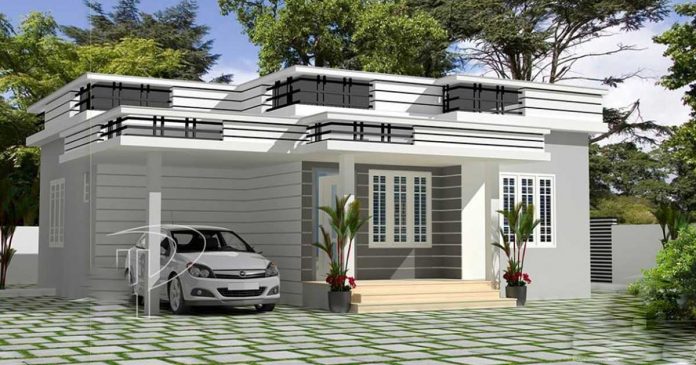Floors may be built on beams or joists[1] or use structures like prefabricated hollow core slabs. The subfloor builds on those and attaches by various means particular to the support structure but the support and subfloor together always provides the strength of a floor one can sense underfoot. Nowadays, subfloors are generally made from at least two layers of moisture resistant (“AC” grade, one side finished and sanded flat) plywood or composite sheeting, jointly also termed Underlayments on floor joists of 2×8, 2×10, or 2×12’s (dimensional lumber) spaced generally on 16-inch centers, in the United States and Canada. Some flooring components used solely on concrete slabs consist of a dimpled rubberized or plastic layer much like bubble wrap that provide little tiny pillars for the one-half-inch (12.7 mm) sheet material above. These are manufactured in squares and the edges fit together like a mortise and tenon joint. Like a floor on joists not on concrete, a second sheeting underlayment layer is added with staggered joints to disperse forces that would open a joint under the stress of live loads like a person walking.
In Europe and North America only a few rare floors will be seen to have no separate floor covering on top, and those are normally because of a temporary condition pending sales or occupancy; in semi-custom new construction and some rental markets, such floors are provided for the new home buyer (renter) to select their own preferred floor coverings usually a wall to wall carpet, or one piece vinyl floor covering. Wood clad (hardwood) and tile covered finished floors generally will require a stiffer higher quality subfloor, especially for the later class. Since the wall base and flooring interact forming a joint, such later added semi-custom floors will generally not be hardwood for that joint construction would be in the wrong order unless the wall base trim was also delayed pending the choosing.
Some sub-floors are inset below the top surface level of surrounding flooring’s joists and such subfloors and a normal height joist are joined to make a plywood box both molding and containing at least two inches of concrete (A mud floor” in builders’ parlance). Alternatively, only a slightly inset floor topped by a fibrous mesh and concrete building composite floor cladding is used for smaller high quality tile floors – these “concrete” subfloors have a good thermal match with ceramic tiles and so are popular with builders constructing kitchen, laundry and especially both common and high end bathrooms and any other room where large expanses of well supported ceramic tile will be used as a finished floor. Floors using small (4.5 in or 11.4 cm and smaller) ceramic tiles generally use only an additional 1⁄4-inch layer of plywood (if that) and substitute adhesive and substrate materials making do with both a flexible joints and semi-flexible mounting compounds and so are designed to withstand the greater flexing which large tiles cannot tolerate without breaking.
Ground level slab floors are uncommon in northern latitudes where freezing provides significant structural problems, except in heated interior spaces such as basements or for outdoor unheated structures such as a gazebo or shed where unitary temperatures are not creating pockets of troublesome meltwaters. Ground-level slab floors are prepared for pouring by grading the site, which usually also involves removing topsoil and other organic materials well away from the slab site. Once the site has reached a suitable firm inorganic base material that is graded further so that it is flat and level, and then topped by spreading a layer-cake of force dispersing sand and gravel. Deeper channels may be dug, especially the slab ends and across the slab width at regular intervals in which a continuous run of rebar is bent and wired to sit at two heights within forming a sub-slab “concrete girder”. Above the targeted bottom height (coplanar with the compacted sand and gravel topping) a separate grid of rebar or welded wire mesh is usually added to reinforce the concrete, and will be tied to the under slab “girder” rebar at intervals. The under slab cast girders are used especially if it the slab be used structurally, i.e., to support part of the building.











